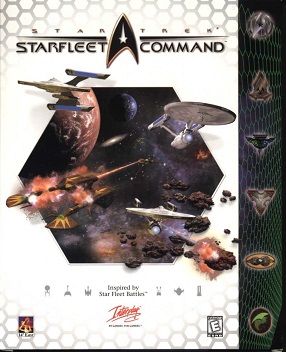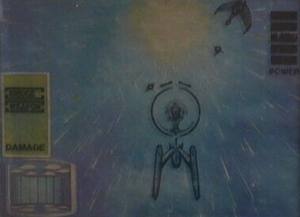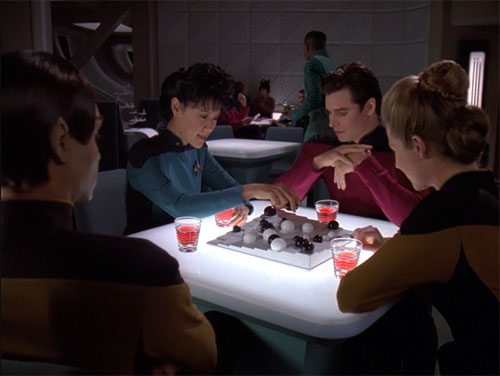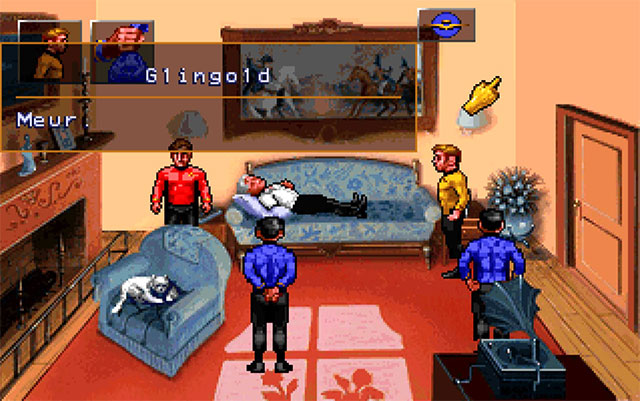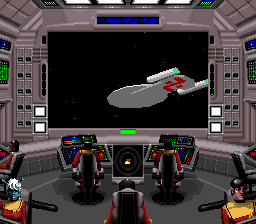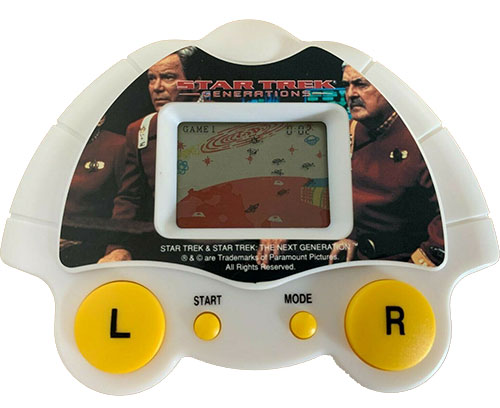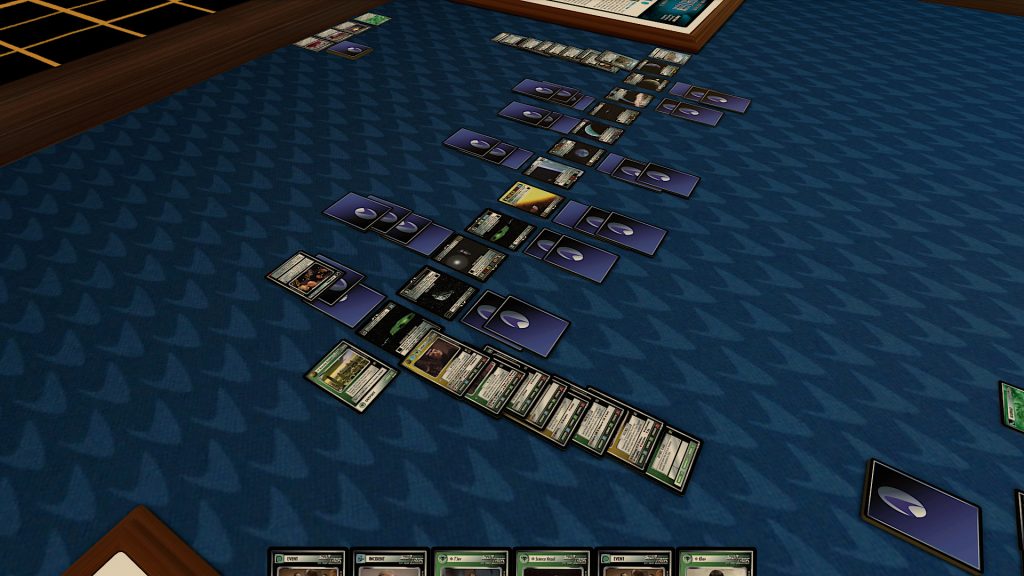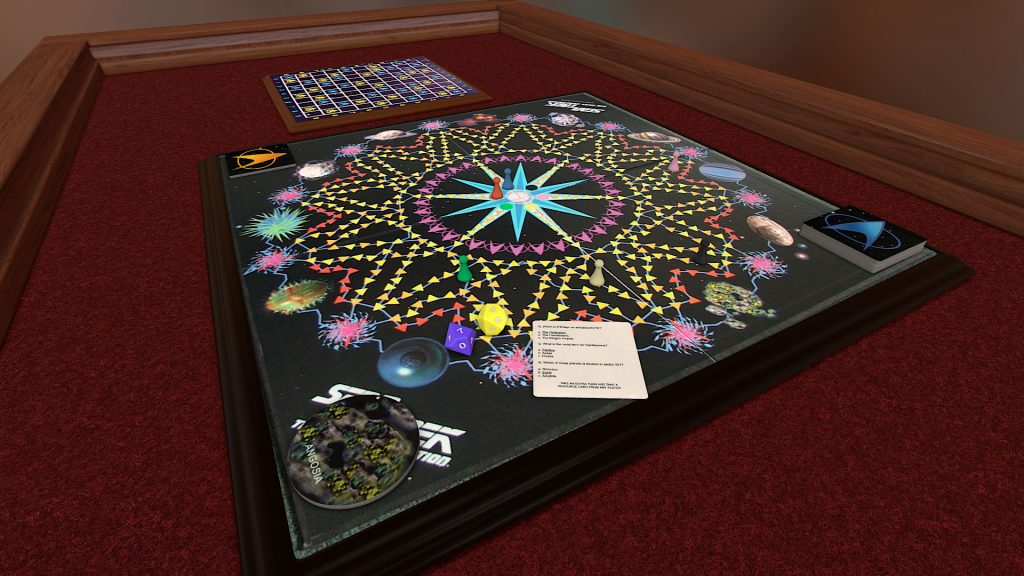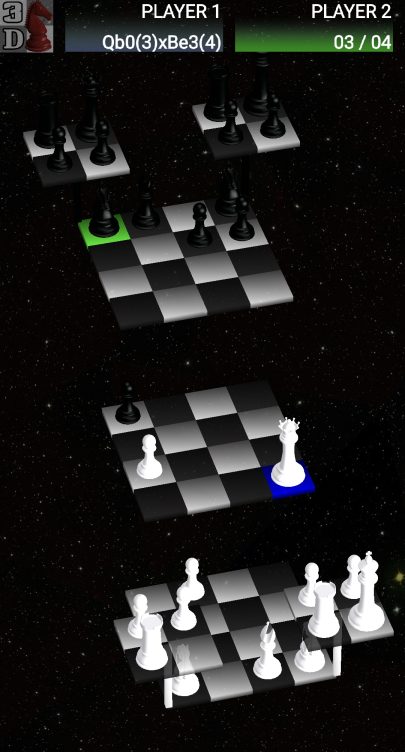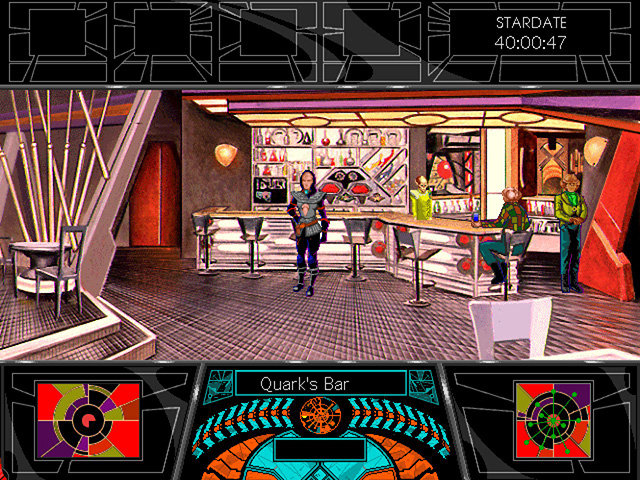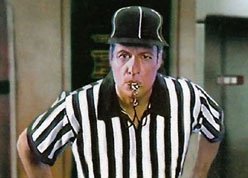Don't forget Starfleet Battles..
I opted against that one, due to it being unofficial, not using the "Star Trek" name, creating its own version of the universe and being a complicated game. I may look at it after doing the others (along with Federation Commander)
Also, in the Federation Trading Post in Berkley, there was a one off "Star Trek" video game that I played whenever I visited..
There's a video of the gameplay on YouTube, https://fb.watch/jQpfb7GPG4/
Now this one I hadn't found in my research. Thanks for the information!
Star Trek: Trivia Game
- Original Release: 1986
- Developer: Scott Miller
- Publisher: Apogee
- Platform: DOS

A fairly basic trivia game covering The Original Series. It comes in 10 volumes, each with 100 questions each. Volume 1 starts with logical questions, while volume 10 seems to have some more obscure stuff that requires you to remember specific numbers or which members of the crew were on the bridge at the start of certain episodes. The presentation is fairly basic, but effective.
Star Trek: The Rebel Universe
- Original Release: 1987
- Developer: Mike Singleton
- Publisher: Firebird Software
- Original Platform: Amiga ST

The Rebel Universe certainly has ambition. It provides a large region of space to explore called the Quarantine Zone, where the Klingons have managed to mind control Federation crews using special dilithum. As a result, everyone in this area is hostile to you. There are multiple ways to win the game, such as destroying, components for the mind control system, jamming Klingon communications or finding and releasing a virus to keep Klingons peaceful.
Unfortunately, the interface for the game is terrible. You swap between different panels to control different aspects of the ship, but it is extremely clunky and you have to often return to the “bridge” screen to select who you need. The smaller screens also don’t update with important information and some are just the same image that don’t reflect the right information, so you have to constantly move back and forth.
There’s definitely a lot of ambition with The Rebel Universe, it’s tedious to play.
Star Trek: First Contact
- Original Release: 1988
- Developer: Micromosaics
- Publisher: Simon & Schuster
- Original Platform: Apple II
- Version Played: DOS

Using similar systems to The Kobayashi Alternative, First Contact (not to be confused with the episode or film of the same name) refines some of its systems, making walking around much easier as it shows which rooms you’re heading to. It also displays who you are speaking to, so you aren’t constantly giving commands to the wrong people.
The story involves taking some diplomats to a planet for negotiations, however this is just a ruse for a secret mission to make first contact with a new species who are sending out a signal (the Federation don’t want the Klingons to notice). But while the transportation of diplomats is just supposed to be a simple thing, a murder happens that you need to solve.
The exploration element of The Kobayashi Alternative is gone, and this is a much more linear adventure. Events will progress at certain times, so you can miss important moments, so you need to prioritise what you want to look into. The story is a decent one, with a few locations and different problems at each, but doesn’t have the wonder of The Kobayashi Alternative.
Star Trek V: The Final Frontier (DOS)
- Original Release: 1985
- Developer: Micromosaics
- Publisher: Simon & Schuster
- Original Platform: Apple II
- Version Played: DOS

This is a collection of minigames loosely based on Star Trek V. Wormhole teaches you how to fly the ship, as you have to avoid debris in a wormhole while collecting crystals. In Minefield, it teaches you how to use the ship’s weapons as you have to destroy a circle of mines before they reach the Enterprise. Hand-to-hand combat is a simple Street Fighter-style fighting game where you block and punch. Finally, there is “BoP Simulator” where you fight a Klingon bird of prey.
In “normal game”, you play through each one of these modes, connected via images that tell the story of Star Trek V. These are probably the best part of the game, with some lovely looking pictures showing the story.
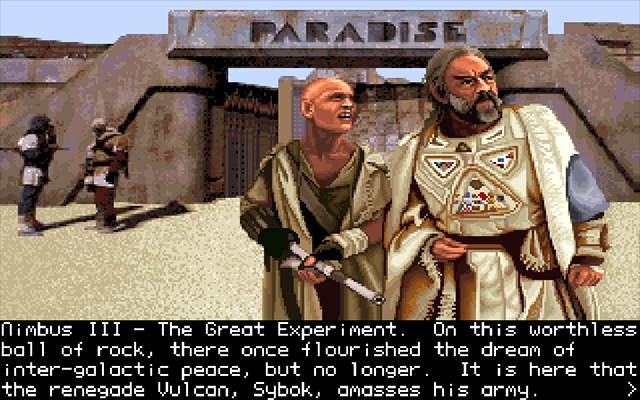
Another highlight is the copy protection mechanic, which requires you to use the manual to translate Klingon phrases. Because of this, I know that Ghaj Qab How Wani’ is spoken in every Star Wars film.
Star Trek V: The Final Frontier (NES)
- Original Release: N/A (In development 1989)
- Developer: Bandai
- Publisher: Bandai
- Original Platform: NES

If you don’t remember a NES game based on The Final Frontier, you’re not going crazy: this game was cancelled and was never released. A four state prototype was discovered so we can see what the game would look like.
Like a lot of movie-based games, this is a side scrolling shooter. You start off as Sulu as he fights his way through Paradise. It has the difficulty you would expect from a NES movie tie-in game, with lots of projectiles flying in arcs. That said, this isn’t as frustrating as most of them. This first level is a pretty basic kill enemies and move to the right level.
Next you play as Scotty in a more open level. You need to find enemies that have bombs in order to collect them, the objective being blowing up a door to get to Kirk, Spock and McCoy. If you travel down the level, there’s a section you can’t get back up without the aid of rocket boots.
The third level is an Enterprise level, and a terrible one due to the controls. You need to blow up asteroids and then a bird of prey.

Finally, you play as Kirk on the creation planet. This is another liner level, but has basic platforming segments that work just fine (a lot of movie tie-in NES games have terrible platforming mechanics). The aim is to get to and defeat the entity that Sybok (Spock’s former classmate) believes to be “Got” (no, I haven’t made any mistakes, this is what the text of the game says) with a boss fight at the end.
If this got finished, it would have been a decent (albeit frustrating) game. I think Bandai were aiming to create a level for each member of the crew.
Star Trek: The Next Generation – The Transinium Challenge
- Original Release: 1989
- Developer: TRANS Fiction Systems
- Publisher: Simon & Schuster
- Original Platform: DOS

This one is pretty terrible. While previous DOS games have had nice graphics, this one wanted to have animation so much that it opted for extremely ugly graphics in order to do so. The animations are bizarre, too, mostly consisting of Riker looking around confused.
Riker has been put in charge of the Enterprise. Picard is still there and the game would have been no different if you played as the Captain instead, so I’m not entirely sure why you play as Riker. None of the character’s personalities come out in the writing anyway. Riker’s mission is to stop some terrorist attacks.
To get things done, you have to continuously talk to people waffle on about nothing important, wander around a bit and chase ships around by moving between planets and asteroids because their position is random. The game is mainly boring, repetitive tasks. While the text-based games have quite big stories, this one feels like it would just be the cold opening of an episode.
This game also has combat with a turn-based mechanics where you can evade, shoot or alter position. It would be interesting to try it properly, but there’s only one fight in the game and the enemy ship keeps running away, requiring you to randomly check locations so you can fight it again.
Klin Zha
- Original Release: 1989
- Developer: John M. Ford, Len Loyd
- Publisher: Self Published
- Original Platform: Board Games

A Klingon chess-like game that was described in the Star Trek book The Final Reflection by John M. Ford (who helped develop the three Star Trek III Solitaire Games) and then developed into a full game by fans.
There are pieces with different movement rules, the most important of which is the “Goal”. This can’t move on its own, but can be moved by other pieces. The object of the game is to kill your opponent’s goal or to block them from being able to move. Each player sets up their pieces on one segment of the triangular board, with the third being empty space that can be moved into.
The game encourages to play like a Klingon, flaunting your goal for honour and glory. There’s nothing but shame if you play like a P’takh and hide your goal behind the blockade’s shields.
Star Trek: The Next Generation – Trivia
- Original Release: 1990
- Developer: George Broussard
- Publisher: Micro F/X Software
- Platform: DOS

Another basic trivia game, this time based on the first few seasons of The Next Generation. The latest episode I encountered a question for was the season 3 episode “The Price”.
Visual Star Trek
- Original Release: 1990
- Developer: Unknown (Possibly John Saxton)
- Publisher: Self-Published
- Platform: DOS

A version of the 1971 Star Trek game that has very little information about it – the only reference to who made it is on Trek Core, where it lists John Saxon followed by a question mark. In terms of major versions of the first Star Trek game, this one seems very overlooked, which is unfortunate.
This version boasts a more visual style along with mouse controls. Navigating is now as simple as dragging the mouse from the ship to where you need to go, and long range sensors are always active. On top of stars, there are also planets which can be mined for dilithium that can be turned into energy.
There are also a few additional hazards: gravity wells from black holes, tribbles and supernovae. My ship got infested with tribbles and systems slowly stopped working, but I never figured out how to get rid of them. However, these can be turned on an off, along with other options such as choice in the length and difficulty of the game.
Star Trek (Konami LCD)
- Original Release: 1991
- Developer: Konami
- Publisher: Konami
- Original Platform: Electronic Handheld
- Not played: Too expensive to get second hand.
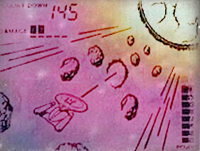
This LCD game seems quite rare, with not much information on it. There is lots of information on Konami’s Star Trek 25th Anniversary LCD, but this one is mostly forgotten about. I did find a description which says that the goal is to blast your way through asteroids in order to fire a fusion control missile at the star to stop it exploding.
The Alcor Trivia Pro Classic Star Trek
- Original Release: 1992
- Developer: Unknown (Possibly John Saxton)
- Publisher: Self-Published
- Platform: DOS
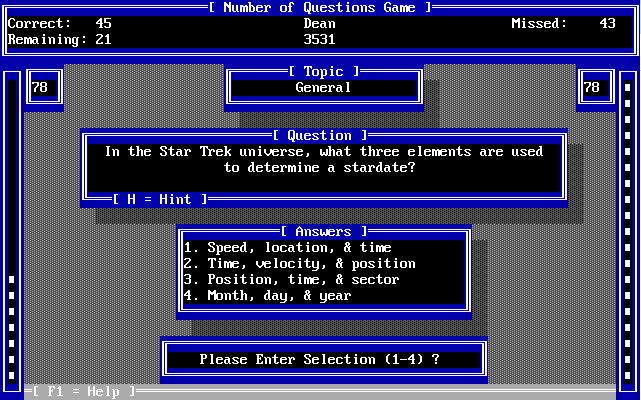
This trivia game has a lot more features than the previous ones. The major one is multiplayer, where people take turns answering questions to compete for a high score. There are quite a few options to choose from, such as number of players, number of questions, timers, if the game reveals the correct answer if you get it wrong and “casino rules” where you can bet a portion of points that you’ll get the next question right.
The questions are all based on The Original Series. Some are about the episode, some are about the production (one was for the budget of The Cage, with four very similar numbers as options). I did notice one slight error: when asked about what division wears red shirts, Engineering was apparently wrong (it said security, which is also correct)

